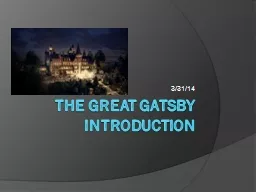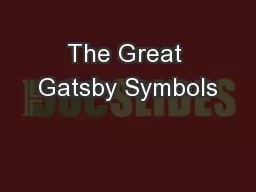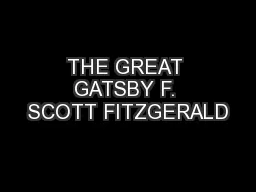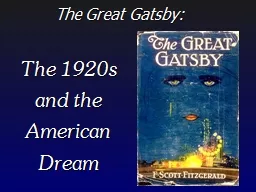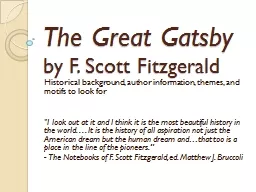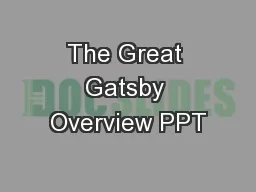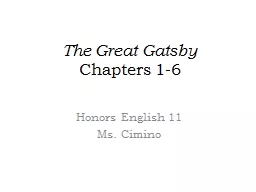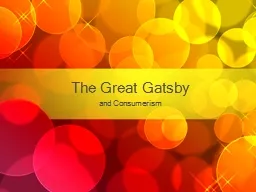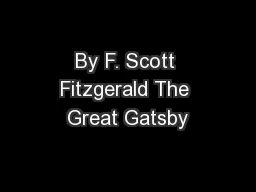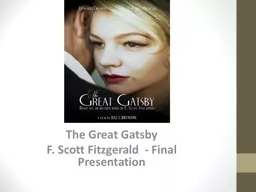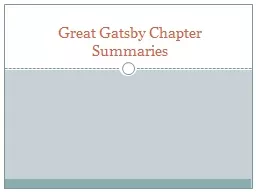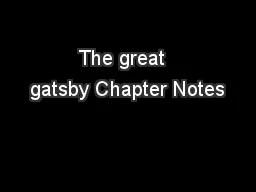PPT-The Great Gatsby Introduction
Author : faustina-dinatale | Published Date : 2016-07-28
33114 Understanding the Times Post WWI 19141918 Standard way of living increased for most Americans abandoned small towns in exchange for urban living Economy prospered
Presentation Embed Code
Download Presentation
Download Presentation The PPT/PDF document "The Great Gatsby Introduction" is the property of its rightful owner. Permission is granted to download and print the materials on this website for personal, non-commercial use only, and to display it on your personal computer provided you do not modify the materials and that you retain all copyright notices contained in the materials. By downloading content from our website, you accept the terms of this agreement.
The Great Gatsby Introduction: Transcript
Download Rules Of Document
"The Great Gatsby Introduction"The content belongs to its owner. You may download and print it for personal use, without modification, and keep all copyright notices. By downloading, you agree to these terms.
Related Documents

